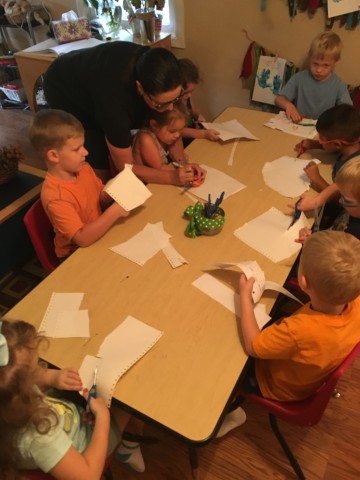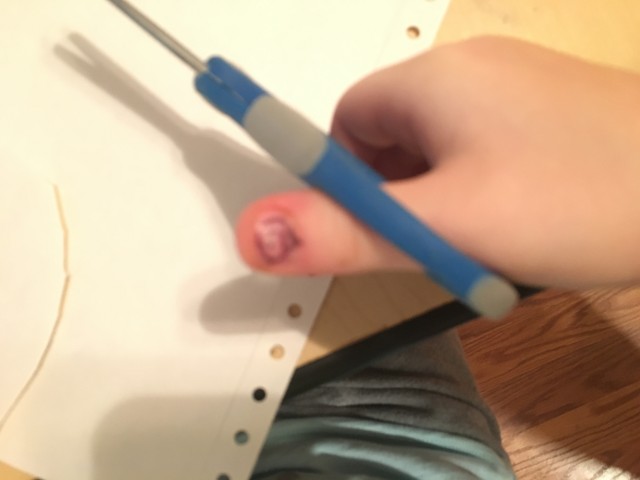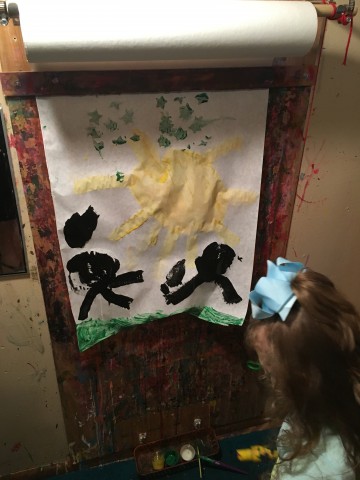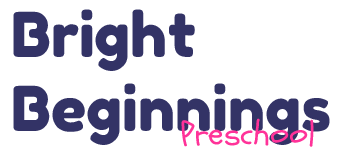Scissor Safety , Easel Fun and Fire ?
Scissor Safety , Easel Fun and Fire ?
Each day we are getting a little more familiar with each other and a little more accustomed to our routine. The rooms have returned to a peaceful chaos . What is peaceful chaos ? It looks like children moving and exploring and making choices and it usually has a low hum of conversation and laughter.
Today I introduced scissors and how to use them safely. ( Not all children are ready to use scissors but since they are in the art center everyone needed to know how to handle them safely. ) We talked about what might happen if we were walking with them and fell. We talked about how scissors are only for paper and not clothing, hair or lips. I mean, if we didn’t have lips how would we talk ?

A prerequisite for scissor cutting is tearing , so we should allow young children many opportunities to practice tearing paper and materials such as lettuce and clay prior to teaching them how to cut with scissors. Today we “introduced” scissors but we have a few that will need to do more fun activities involving tearing before they are ready to cut.
We practiced the mechanics of using scissors . Thumb in the small hole and on top. ( Did you notice your child had a smiley face on his thumb as a reminder ?)

Other fingers, sometimes 2-3 or all in the large hole . We point the scissors away from our body and open , shut, open , shut, like the big mouth of an alligator. If you want your child to practice at home make sure they are sitting comfortably at a table so they don’t fall out of a chair and perhaps start with cutting play-doh! Other things you can do is have them sit at a table while you cook and give them old mail or magazines to cut out of or lengths or gift wrap ribbons is usually easy to handle and cut too.
We also talked about how we play/ work in the easel area . The philosophy we cling to is that we respect children and their rights and that includes while painting . We don’t choose the colors the children do. After painting they wash out their paint brushes and clean up their area. We had some artist at work today.

A child becomes totally engrossed , immersed in the process of making a work of art. The sensation of feeling the smooth think paint sliding onto the ease paper calms the child and brings pleasure in the creation. Art is a vital and vibrant part of quality early childhood programs, contributing to all aspects of the young child’s development . We encourage them to use materials in different ways and we do not have the children copy a teacher’s model or make a designated project. ( Except.. maybe.. holidays.. )

As children draw or paint children think creatively , make decisions and solve problems. Children’s fine motor skills are developed naturally through the manipulation of brushes , crayons and scissors. All of these activities prepare children for writing in later years. Language is also developed as children talk about color, shape and size and as they describe their work to friends and teachers.
A hint for parents : Value your child’s efforts and expose him or her to quality art work through book illustrations or visits to museums. Don’t say ” good job.” Go a step further and explain what you see and ask them to tell you more. ” I see you used green…why did you chose green?”
In our classroom we value children’s creativity by making most of the art displays on our walls be children’s art. Sometimes we will take pictures of your child’s art to save for our work sampling folders and send home the original. There are a few art pieces we save at school but will be given to you at the end of the year.

Every child is an artist. The problem is how to remain an artist once we grow up.
Pablo Picasso
Oh, AND we had an unplanned fire drill. There was no smoke but the detectors are super sensitive so day three we had a fire drill as the alarms went off . 🙂
